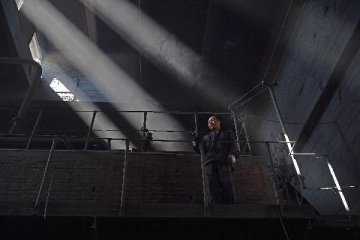
What is the focus of state-owned enterprises (SOEs) reform this year? This week's meetings have given a clear signal.
China will manage to resolve excess capacity in non-ferrous metals, shipbuilding, refining and building materials industries, according to both the State-owned Assets Supervision and Administration Commission (SASAC) of the State Council’s meeting on the 2017 economic operation of central SOEs held on January 17 and the meeting of central enterprises and local SASAC leaders held on January 15. SASAC experts said that the four industries have become the new target for capacity reduction, and therefore will become an important area for restructuring and reorganization." In addition, the reorganization of central SOEs in the communications, chemicals, marine equipment and environmental protection sectors is much expected in the market. Especially the environmental protection industry, it will become the new focus of reorganization.
Capacity reduction focuses on four key industries
At the press conference on January 17, Shen Ying, member and chief accountant of the State Council SASAC Party Committee, said that the economic efficiency of central SOEs in 2017 was significantly higher than expected. Both the increment and growth rate of profits hit the highest level in five years.
According to disclosure, the central SOEs’ revenue for the full year of 2017 recorded 26.4 trillion yuan, an increase of 13.3 percent; the total profit was 1,423.08 billion yuan, up 15.2 percent. 49 of them saw an increase of over 10 percent in profit; 26 saw an increase of over 20 percent. The number of companies with more than 10 billion yuan total profit was 41. Among them, traditional industries, including petroleum and petrochemicals, steel and coal, turned around. Advanced manufacturing industries and modern service industries see their profit increase steadily, contributing more than 40 percent to the overall profit of central SOEs.
Li Jin, chief researcher at China Enterprise Research Institute, said, "The state-owned business has bottomed out since the beginning of October 2016, and the overall performance of SOEs has also improved. At present, the state-owned business has entered a period of high quality development. The improvement of central SOEs’ performance is closed related to benefits brought by reforms. In the past year, the SASAC took hard efforts in the supply-side structural reforms, the quality and efficiency improvement and the SOEs reform, and achieved remarkable results.
On January 15, SASAC director Xiao Yaqing pointed out at the annual meeting that in 2018, central SOEs should complete the task of resolving excess coal production capacity by 12.65 million tons and coal production capacity by 80 million tons, actively promote capacity reduction in the coal and electricity industry and do well in resolving excess capacity in non-ferrous metals, shipbuilding, refining and building materials industries.
"These four industries are mentioned, indicating that the new target of capacity reduction in 2018 is determined. They will naturally be an important area for restructuring and reorganization," Li Jin said.
In addition, efforts will be stepped up to cut capacity in coal, electricity, shipbuilding, nonferrous metals, refining and building materials industries. "Not only that, capacity reduction should be combined with reform deepening technological innovation and restructuring to improve industrial development," Shen Ying said.
Reorganization in maritime equipment and environmental protection sectors are mentioned
Integration and restructuring of seven central SOEs, including China National Machinery Industry Corporation Ltd. and China Hi-tech Group Corporation, China Poly Group Corporation, Sinolight Corporation and China National Arts & Crafts (Group) Corp., and China Guodian Corporation and Shenhua Group Corporation, were finished in 2017. By now, there are 98 central SOEs under supervision of SASAC.
Xiao Yaqing proposed on January 15 to advance strategic reorganization of central SOEs in equipment manufacturing, coal, electricity, communication and chemical engineering sectors. At the same time, he suggested giving play to the companies ran by state-owned capitals and boosting resource integration in coal, steel, maritime equipment and environmental protection fields.
Pushing forward reorganization in communication and chemical engineering was proposed at the executive meeting of the State Council on September 27, 2017. Future moves are expecting. In chemical industry, China National Chemical Corporation and Sinochem Corporation have repeatedly clarified the news about merging between them. However, as their merging can make industrial chain more complete, which will help form a more stable transaction relation, the market is always anticipate the consolidation.
As for communication field, an analyst thought that the country may adopt professional integration. It may follow the mode of China Tower so as to achieve the goal of reducing repeated investment and cutthroat competition. “The new round of restructuring of SOEs in communication industry is very likely to spin off part of businesses of operators and then integrate them. In addition, local SOEs in communication industry may be merged into central SOEs from the same industry,” said the above analyst.
Besides, resources integration of maritime equipment and environmental protection fields were raised at the annual meeting of SASAC. Particularly, how to strengthen the environmental protection sector will be the new highlight of the consolidation. Li viewed that it is getting increasingly obvious that integration coverage extends to upstream and downstream industries of industrial chain and alliance between giants takes effect. Strategic emerging industries also become important for optimization of SOEs structure and deployment.
Lowering leverage of central SOEs also attract extensive attention. Shen said that the SASAC has specified that average debt-to-assets ratio of central SOEs should decline by another two percentage points by 2020. Meanwhile, in order to improve their capital strength, central SOEs need to do three things. Firstly, they should strive to expand equipment financing. Secondly, they need to make their capitals increase through debt-to-equity swap. At present, about 36 central SOEs are qualified for undertaking debt-to-equity swap business. 17 central SOEs have signed agreement on debt-to-equity swap with relevant institutions. The framework agreement involved 500 billion yuan. The SASAC is urging implementation of debt-to-equity swap, 40 percent of which have been carried out. Thirdly, they need to accumulate their capitals by improving economic performance.
Translated By Coral & Vanessa




















Latest comments